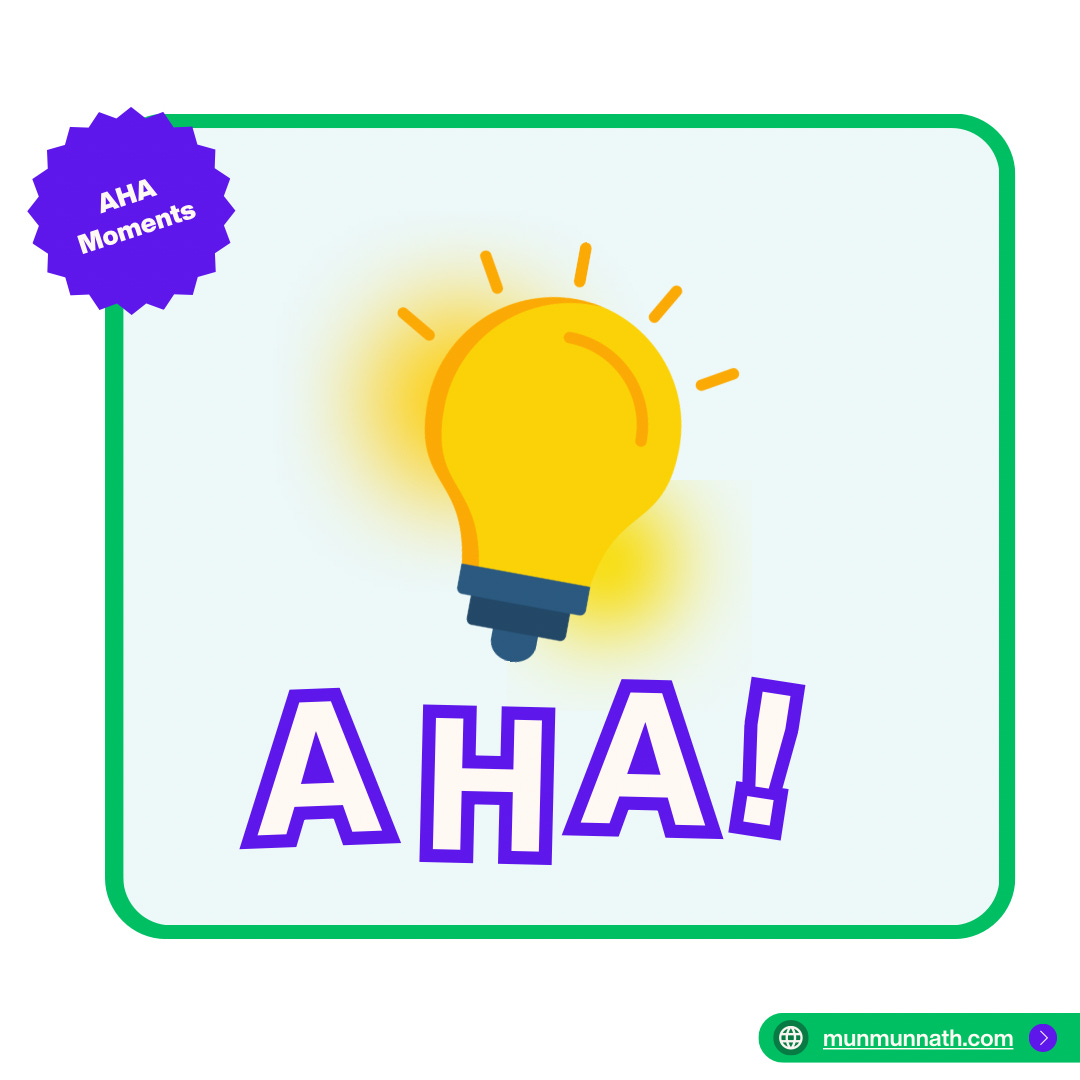20. What are AHA Moments ?
Aha moments are marketing gold - but how do you find them?
An Aha moment is a moment of inspiration or comprehension - when you suddenly get an insight, like a light bulb turning on in your head.
There are two types of Aha moments -
1) Your Aha moment about the customer—It’s when you identify the deep human truth of your customer's life and how you could help make them better.
2) Your customer’s aha moment about you—When the product user realizes the key value they get from your product.
What is common to both is that an Aha moment is not about learning something new; it’s about remembering something that always existed or was true. Once revealed, it seems blindingly obvious.
Don’t you find the same workout routine boring? Would it not be fun to pay once and try out new types of workouts? Of course, now it’s easy to do so using the ClassPass app. But it took many years of trial and error before ClassPass founders discovered this aha moment after noticing the behavior of ‘forgery’ of their customers.
How do you increase the likelihood of having an Aha Moment?
Interviewing existing or potential customers to understand their fundamental human needs helps you identify and form hypotheses about potential truths that could be relevant to your brand. You may not have to conduct exhaustive research, hire agencies, or spend a ton of money on this—even speaking to 10-15 customers can open doors of insights for you.
For example, a partner helped Stanley recognize that their market positioning ignored women who loved their product for specific reasons. Pivoting to target this segment led to 10X growth.
Dove had a significant aha moment when their commissioned study, “The Real Truth About Beauty,” revealed that only 2% of women worldwide considered themselves beautiful. This insight led to the creation of the “Campaign for Real Beauty.”
Analyzing data to look for patterns, such as
Which metrics indicate the value customers are getting from your product
What is the difference between the behavior of good and bad customers
What are the moments of friction in using your product
One of the key sources of insights here can be those customers who absolutely love your product and would be very disappointed if it did not exist. It indicates that your product offers a value that no one else does. Identifying this cohort and their reasons for disappointment will tell you exactly what you need to focus on.
Netflix’s major “aha moment” came from analyzing customer data, which showed that users preferred a simpler, all-you-can-watch, subscription-based model over the a la carte DVD rental. This insight was pivotal in the transition to streaming.
Spotify noticed that users enjoyed creating playlists curated to their tastes. This led to the development of features like “Discover Weekly,” which automatically generates a weekly playlist for each user based on their specific tastes.
Conduct experiments on messaging, pricing, and UX components
Booking.com ‘s experiment on displaying dynamic, real-time information about how many other users looked at a hotel significantly increased bookings. This insight led to the realization that users perceived hotels with higher current viewership as more desirable or in demand, thereby leveraging a psychological principle known as social proof.
Duolingo is legendary for conducting a massive number of experiments with an urgency that helped them identify their key growth driver—streak-saver notifications, which alert users with streaks if they are about to lose their streak. As streaks increase, user motivation also increases over time, leading to a compounding effect on retention and growth metrics.
As you can see from all these examples, 3 things are true for a real Aha moment -
1. It usually transcends culture and societies
2. There is a strong underlying emotional connection
3. It’s usually an unmet need


